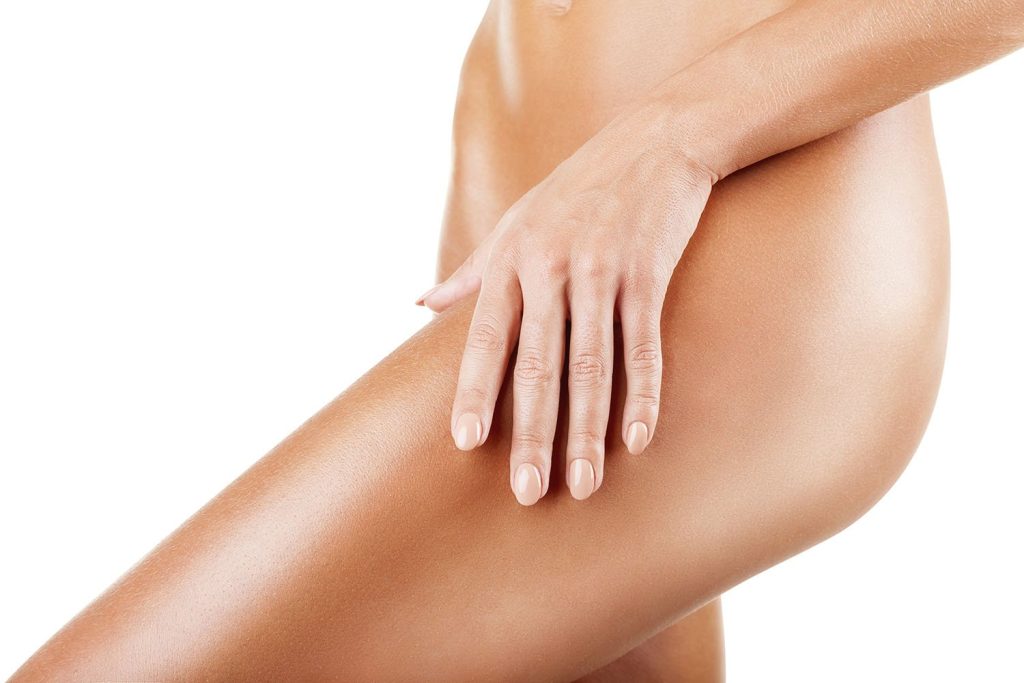Understanding Why It’s Done
Skin Improvement
Laser skin resurfacing, a cosmetic procedure using ablative lasers, is a go-to for those wanting to reduce wrinkles, scars, and sun damage, often performed by a dermatologist or cosmetic surgeon. This procedure, often performed by a cosmetic surgeon or dermatologist, works by removing layers of the skin with precision through ablative laser treatments using ablative lasers. It encourages new cells to form during the healing process. These new cells, often a result of dermatologist-recommended laser treatments with ablative lasers, give the skin a tighter, younger-looking surface, albeit with some risk.
The laser treatments, recommended by a dermatologist, are especially effective on the face for generating new skin but can be used on hands too with ablative lasers. It significantly improves skin texture and appearance.
Collagen Boost
One key benefit of this procedure, specifically laser treatments using ablative lasers as recommended by a dermatologist for the face, is its ability to promote collagen production. Collagen is vital for maintaining skin elasticity and firmness. As we age, our natural collagen production decreases, leading to lines and loose skin.
Laser resurfacing stimulates the deeper layers of the skin. This kick-starts the body’s natural healing processes, including collagen production. The result is healthier-looking, more resilient skin over time.
Advantages Over Alternatives
Compared to other rejuvenation methods, laser resurfacing offers distinct advantages. First, it provides precise control over the treatment intensity. This precision allows for customization according to each individual’s needs and desired downtime.
Secondly, it targets specific types of skin concerns effectively – from fine lines to deep wrinkles and uneven texture. Other methods might require multiple types of treatments to achieve similar results.
Lastly, while there is some downtime involved with laser resurfacing, many find it manageable. They appreciate the significant improvements in their skin’s appearance after healing.
Types of Laser Resurfacing Methods
Ablative Lasers
Ablative lasers work by removing the outer layer of skin. They are potent tools for addressing severe skin issues like deep wrinkles and scars. The recovery time is longer, but the results can be dramatic.
Patients often choose ablative treatments for their transformative effects. These lasers, including CO2 and Erbium, target damaged skin cells with precision. They stimulate collagen production, leading to firmer and smoother skin.
Non-Ablative Lasers
Non-ablative lasers, in contrast, do not remove any skin layers. Instead, they heat the underlying skin tissue to promote collagen growth. This method is less invasive and has a shorter recovery period.
These lasers are ideal for patients seeking minimal downtime. They effectively treat fine lines, minor wrinkles, and some types of scars. However, multiple sessions may be necessary to achieve desired outcomes.
Fractional Resurfacing
Fractional laser resurfacing targets only a fraction of the skin at a time. It creates microscopic wounds that heal rapidly while leaving surrounding tissues intact. This approach reduces recovery time significantly.
Both ablative and non-ablative technologies can be used in fractional resurfacing. It offers a balance between efficacy and recovery, making it suitable for various skin concerns.
Laser resurfacing methods have evolved to address diverse skin issues effectively. From ablative lasers that provide deep rejuvenation to non-ablative options with minimal downtime, there’s a solution for nearly every concern. Fractional resurfacing stands out by combining the best aspects of both techniques, offering efficient treatment with quicker healing times.
Ideal Candidates for the Procedure
Skin Type
Ideal candidates have lighter skin tones. This is because laser resurfacing tends to work best on lighter complexions. The procedure targets the outer layer of skin while heating the underlying tissue to stimulate collagen production.
Patients with fine lines, wrinkles, or minor facial flaws benefit greatly. They see significant improvements in their skin’s appearance.
Health Status
Candidates should be in good overall health. They must discuss their medical history with a dermatologist or cosmetic surgeon.
Those with realistic expectations about what laser resurfacing can achieve are more satisfied with their results. It’s crucial that patients understand the procedure’s capabilities.
Exclusions
Individuals with active acne or very dark skin might face increased risks. These conditions can lead to complications post-procedure.
People prone to cold sores need to inform their provider beforehand. This is because laser treatments can trigger outbreaks in susceptible areas.
Risks of Laser Skin Resurfacing
Common Side Effects
Laser skin resurfacing, while effective for various skin concerns, comes with its set of side effects. Redness, swelling, and itching are typical. They usually clear up within a few days to weeks.
Patients often experience these minor discomforts post-procedure. It’s crucial to follow aftercare instructions to aid recovery.
Serious Risks
Beyond the common side effects, there are more severe risks involved. Scarring and changes in skin pigmentation can occur. In some cases, individuals might notice lighter or darker skin tones post-treatment.
Infection is another potential risk that cannot be overlooked. It underscores the importance of proper aftercare and hygiene.
Practitioner Choice
Choosing a qualified practitioner is paramount in minimizing these risks. Experience and expertise play a significant role in ensuring safety and effectiveness.
A skilled professional can significantly reduce the chances of complications. They provide tailored care based on individual skin types and concerns.
Preparing for Your Laser Procedure
Consultation
Before undergoing laser skin resurfacing, it’s crucial to have a detailed consultation. This conversation allows you to express your goals and concerns. Your specialist will likely adjust your current medications and advise on how to prepare your skin.
They might suggest stopping certain medications that can hinder healing. They’ll also discuss the importance of sun protection before and after the procedure.
Sun Exposure
Avoiding sun exposure is vital in the weeks leading up to your laser treatment. UV rays can damage new skin layers, affecting the outcome. Use broad-spectrum sunscreen daily, even on cloudy days.
Wearing protective clothing when outdoors helps shield your skin further.
Smoking and Medications
Smoking can significantly delay healing. Quitting several weeks before and after your cosmetic procedure is advised. Also, avoid medications like aspirin or ibuprofen that can increase bleeding risk.
Your doctor might prescribe specific medications to prepare your skin for the laser.
Recovery Prep
Prepare for recovery by arranging time off work. You may need help at home during the initial days post-procedure. Stock up on essentials like ice packs and gentle skincare products recommended by your specialist.
Using ice packs can reduce swelling and discomfort. Follow all care instructions closely to ensure a smooth recovery and optimal results.
What to Expect During and After Treatment
Anesthesia Options
Before the laser touches your skin, you’ll discuss anesthesia options with your doctor. They might apply a topical numbing cream or suggest local anesthesia depending on the treatment area’s size and your pain tolerance.
Pain management is key. You will feel minimal discomfort during the procedure.
Laser Application
The actual laser application process varies in length but often lasts between 30 minutes to two hours. The device emits brief pulses of high-intensity light that precisely remove layers of skin. This phase requires steady hands and expertise.
Expect a sensation similar to a rubber band snapping against your skin. The technician will keep you comfortable throughout.
Immediate Aftercare
Post-treatment care is crucial for healing. Avoid sun exposure and apply prescribed ointments to aid recovery. Your doctor will outline a specific regimen including gentle cleansing and moisturizing.
Follow these instructions closely to minimize side effects.

Recovery Time
Recovery time can vary widely based on the laser’s intensity and your body’s healing rate. Mild treatments may require only a few days, while more intense procedures could need several weeks for full recovery.
Expect redness, swelling, and peeling as part of the healing process. These effects lessen with proper care.
Achievable Results with Laser Resurfacing
Skin Improvement
The outcomes of laser skin resurfacing can be transformative. However, it’s crucial to understand that results vary. They depend on the individual’s skin condition and the specific type of laser used, whether it’s ablative or non-ablative.
Patients often see a significant improvement in their skin’s texture and tone. This enhancement includes a reduction in fine lines, wrinkles, and even scars. The procedure can also address uneven skin tones, making it a versatile solution for various concerns.
Maintenance Required
While the benefits of skin resurfacing are substantial, they aren’t everlasting. To maintain the rejuvenated appearance, additional treatments might be necessary over time.
This maintenance is especially true for those undergoing less aggressive resurfacing methods. These methods may offer subtler results but require more frequent sessions to sustain improvements.
Summary
Laser skin resurfacing offers a promising path to rejuvenate your skin, tackling issues like wrinkles, scars, and uneven skin tone. By understanding the procedure, knowing the types available, identifying if you’re an ideal candidate, acknowledging potential risks, preparing adequately, and setting realistic expectations for post-treatment results, you’re armed with essential knowledge. This comprehensive approach ensures you make informed decisions about your skincare journey. Remember, achieving the desired outcome hinges on selecting the right type of resurfacing method tailored to your specific needs and following through with proper care pre and post-procedure.
Ready to take the next step towards radiant skin? Consult a certified dermatologist or skincare professional who can guide you through the process based on your unique skin profile. Embrace the opportunity to enhance your appearance and boost your confidence with laser skin resurfacing. Your journey to flawless skin starts now.
Frequently Asked Questions
What is laser skin resurfacing and why is it done?
Laser skin resurfacing rejuvenates the skin by removing damaged skin layers with precision. It’s primarily done to reduce wrinkles, scars, and blemishes, enhancing skin appearance.
What are the different types of laser resurfacing methods?
There are mainly two types: ablative lasers which remove thin layers of skin, and non-ablative lasers that target the dermis to promote collagen growth without removing skin.
Who are ideal candidates for laser resurfacing?
Ideal candidates are individuals with fine lines, wrinkles, acne scars, or uneven skin tone who seek improved skin texture without active acne or very dark skin tones.
Are there any risks associated with laser skin resurfacing?
Yes, risks include temporary redness, swelling, itching, and in rare cases infection or scarring. Choosing a qualified practitioner minimizes these risks.
How should I prepare for my laser procedure?
Preparation involves consulting with your dermatologist to discuss goals and medication adjustments. Avoid sun exposure and certain skincare products as advised by your doctor.
What should I expect during and after the treatment?
Expect a quick procedure with some discomfort. Post-treatment involves several days of healing with specific skincare routines to manage redness and peeling.
What results can be achieved with laser resurfacing?
Laser resurfacing can significantly improve skin texture, reducing the appearance of wrinkles, scars, and pigmentation issues for a more youthful complexion.





